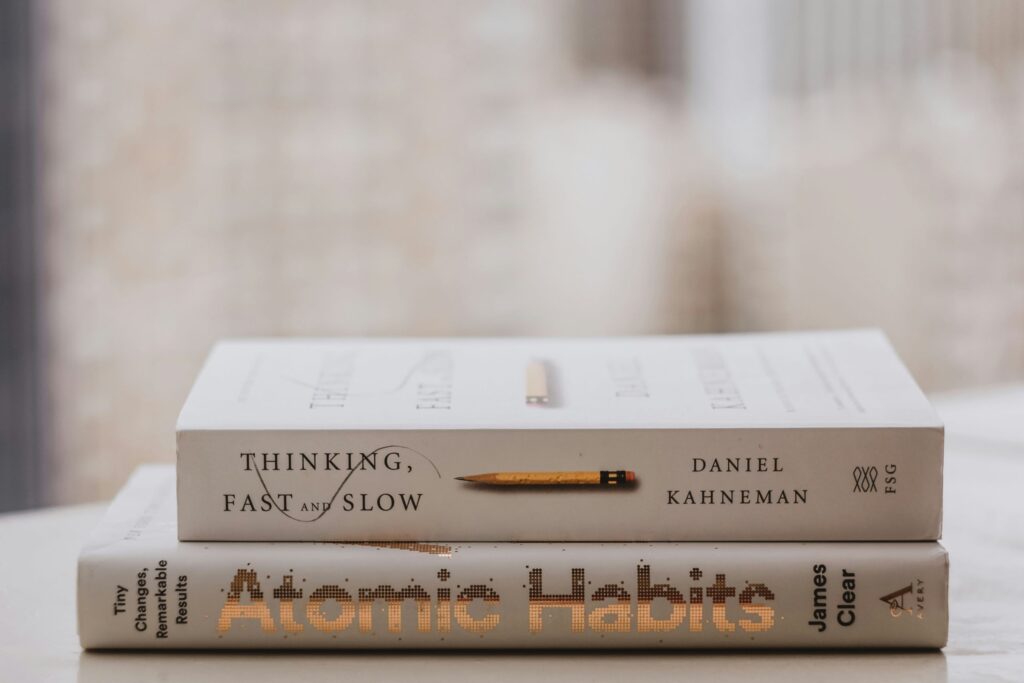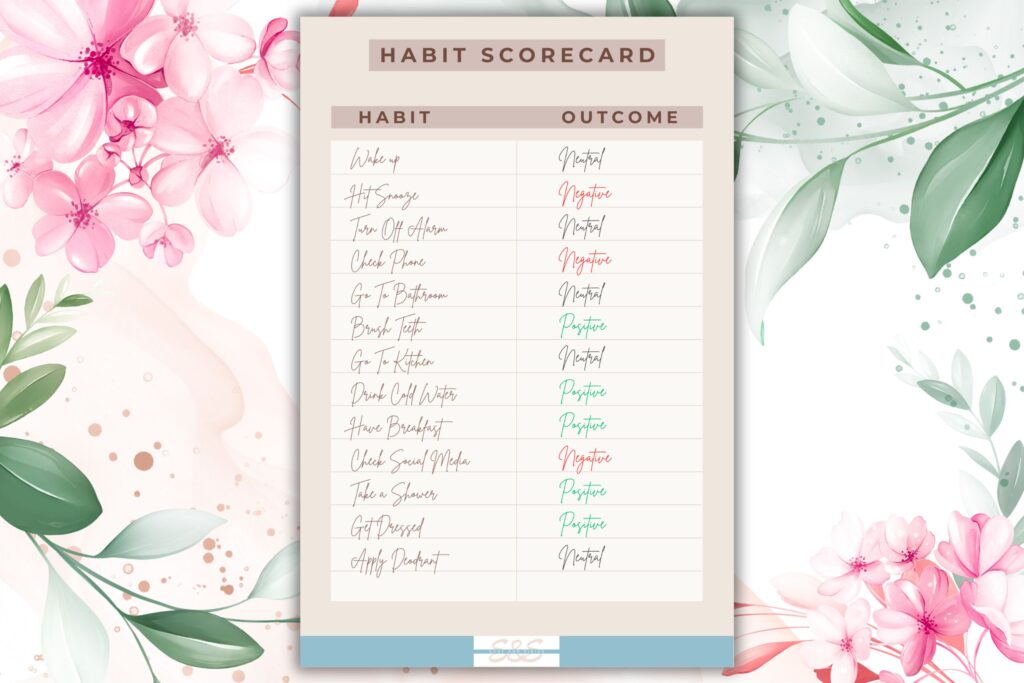The other day, both of us planned to watch TED talks, expert interviews, or podcasts while having dinner to get inspiration on our upcoming blogs but before we knew it, we were three episodes deep into a new web series. All our grand plans to create a productive night routine went down the drain.
I don’t want to be too hard on ourselves because we already have a very busy schedule as our entire day goes into writing blogs, doing our 9-5 jobs, and taking care of ourselves through exercise, nutrition, and practicing mindfulness.
We only get some free time during dinner to watch an episode of a web series or some YouTube videos on traveling, alternate living, camping, space, the universe, etc. But we want to use this free time to watch something productive at least a few times a week if not every day. And we’re yet to build this habit.
If we’re being honest with ourselves, I think we’ve all been there. Making plans to not skip the gym, break the Netflix binge habit, come out of the social media trap, or give up junk food, only to wake up the next day realizing we fell right back into the same old habits.
It is very hard to break a bad habit and build a good one because it requires conscious effort and coming out of your comfort zone. We all aspire to become the best version of ourselves and be successful in life but only a few of us are actually able to do so.
Welcome back to our blog series on “Habits for Success”. The first blog in this series was “10 Habits Of Highly Successful People” and the second was “10 Bad Habits You Should Give Up If You Want to Be Successful”.
While writing these blogs, we thought we were talking about what habits to build and what habits to break but how on earth do you build the good ones and ditch the bad? That’s when we decided to write a blog where we could discuss in detail how to build good habits and how to break bad ones.

Some of the things we share in this blog are from our own experiences and some are from one of our favorite books “Atomic Habits” by James Clear.
If you’ve already read this book then you can relate to the things we’re going to discuss in this blog but if you haven’t, you have the opportunity to learn some really positive things that will change your life for good.
Let’s start with the first section where we understand what are habits and then we can talk about how to break bad habits and build good ones.
Table of Contents
What Are Habits?
Think about the first time you rode a bicycle. Odds are, it took a while before you were able to ride without falling. Why? Because riding a bicycle requires the different muscles in your body to work together harmoniously, and this coordination requires practice.
You have to train those muscles for a while to work in a certain way to maintain your balance and ride the bicycle smoothly. But with enough practice, you were able to ride a bicycle smoothly.
This is true with everything new you try to do. Your body and mind learn to work together to perform that action. And when you do it long enough, it sits in your subconscious mind and becomes second nature.
The human mind is the most developed mind on this planet and it is capable of some extraordinary feats. Its primary job is to remember things, form connections between different thoughts, and guide your body to perform different actions. It does its job extremely well.
It is kind of fascinating if you really think about it. Have you ever observed a baby learning to write with a pen or pencil? Countless muscles in those little hands have to sync up, learning to hold the pencil just right and move it in a way that eventually translates into something meaningful or sensible.
Fast forward through repetitions and enough practice, and you’re able to write so smoothly without giving it a second thought. Because your mind understands how to move each muscle to write sensibly.
Habit formation also works on the same principle. When you perform any action repeatedly for a certain period of time, it gets ingrained in your subconscious mind and you do it without giving it a conscious thought. They become a part of your daily life.
Habits are the unconscious routines and behaviors shaping your days, from that morning toothbrush routine to the nightly scroll through social media. They are the small steps you take every day that can either lead you to success or failure.
How Does a Habit Impact Your Life?
Imagine a plane getting ready for a cross-country flight and just moments before take-off, a subtle adjustment is made, a mere 2-3 degrees or around 200 centimeters. Given the size of the plane and the distance of the journey, it seems insignificant, right?
But if that plane were to keep flying in a straight line, something unusual would happen. Instead of reaching its original destination, it will find itself hundreds of kilometers away. It’s mind-boggling to see that just a tiny tweak altered the entire course of the journey.
Our habits also work similarly and much like that subtle plane adjustment, they have the power to change the trajectory of our lives in directions we might not fathom until years down the road.
Small changes in day-to-day life might seem insignificant at the time but their cumulative effect over time can lead us closer to destinations we never anticipated.
So, the next time you hit that snooze button in the morning, convince yourself that those extra minutes of sleep won’t make much of a difference but fast forward a year or two, and those stolen moments of sleep might have impacted your mornings, your productivity, and, ultimately, your goals.
Or think about that consistent commitment to a 15-minute daily reading habit. It might seem insignificant, but as the pages turn, your knowledge expands. Years later, you find yourself more informed, more articulate, and maybe even on a career path shaped by those dedicated moments with a book.
It’s the accumulation of these seemingly insignificant choices, the small adjustments in your daily flight, that molds your life’s trajectory.
How Do I Stop Bad Habits and Start Good Ones?
Let’s be honest from the get-go so you don’t set any false expectations. Breaking bad habits and building good ones is not easy. You’ve been practicing those bad habits for so long that they have become a part of your daily routine, something that you do unconsciously.
Building good habits will require a conscious and consistent effort for a while. We’ll discuss the step-by-step process for both of them in the subsequent sections but first, let’s understand the habit loop which is the key to building and breaking habits.
When you practice a habit, there are three main components to it, the trigger, the action, and the reward. These elements create a loop that dictates your daily routine.
The first element is the trigger, the starting point. It’s the signal that tells you it’s time to do something. Triggers can be anything, like a specific time of day, a certain emotion, or even a particular place. For example, feeling tired might be the trigger to reach for that cup of coffee.
Then comes the action. It’s what you do in response to the trigger. This could be eating a dessert when you’re sad, smoking a cigarette when you are stressed, or hitting the gym after work. It’s the specific behavior you’ve linked to that trigger.
Finally, the reward. It’s the feeling you get after completing the action. Whether it’s the satisfaction of finishing a workout or the joy of indulging in a treat, the reward is what reinforces the habit.
Over time, as you keep following this loop, your brain gets really good at it and the more you do it, the smoother it gets. Understanding this habit loop is the key to making habits stick and breaking free from the bad ones.
Once you understand how the habit loop works, you can change it. You can tweak the triggers, swap out the actions or routines, or find new rewards.
How Do I Start Building Good Habits?
Let’s break down the habit formation process in a step-by-step process so that it’s easier to understand. It will require some time, patience, and a whole lot of dedication from your end to start a new habit but hopefully, this step-by-step process will guide you in your journey.
1. Awareness
First things first, you’ll have to be aware of the habits you practice throughout the day because most of your current habits are so automatic that you don’t even think about them. So whether you want to build new habits or break free from the old ones, you’ll have to be aware of your daily habits.
You can do this through the habit scorecard. From the moment you wake up to the moment you go to bed, write down all your daily behaviors. Categorize each habit as positive, negative, or neutral based on whether this habit helps you become your best self.

The habits that you’ve been following for so long have become subconscious and you’ll have to make them conscious by being aware of them. Only then you’ll be ready for a change. So become aware of your daily behaviors through this habit scorecard.
2. Make it Obvious and Be Specific
Now that you’re aware of your daily habits, it’s time to get strategic. You want your new habits to stand out, be specific and make them obvious. There should be clarity in your thoughts because vagueness won’t get you any momentum.
So, instead of saying, “I’ll exercise more,” try saying, “I’ll go for a run at 7 a.m. in the nearby park.” Be specific and clear in your intentions. Use the most common triggers – time and location.
Use the following formula to set clear intentions: I will [behavior] at [this time] in [this location].
3. Stack’Em Up
Habit stacking is a very good way of starting a new habit. The idea is to take an existing habit you already do without thinking, like brushing your teeth, and stack your new habit right on top of it. For example, “After I brush my teeth, I will do yoga for 15 minutes.”
Or, “After I brush my teeth, I will meditate for 10 minutes”. This way you create a chain of habits that is more sustainable if you practice them consistently.
4. Environment
Your environment plays an important role in shaping your behavior so use it to your advantage. One thing you can do to make the space around you more supportive of creating a new habit is to make it easier to see the triggers for the new habit.
Make the cues more evident. If you want to start a reading habit, keep your book at arm’s reach. If you want to start drinking more water, keep water bottles at different places where you can see them.
The other thing about the environment is that the objects in the space around you form a certain relationship with you. For example, the couch in the living room might be a place to chill and watch Netflix for some, while it could be a place to read for others.
So the same object has a different relationship with different people. And if you try to get some work done on the couch you use for chilling, it might be really difficult. If possible, make different zones for different activities in your home.
5. Make it Attractive
Each habit has a reward associated with it, that’s why we do it, with the expectation to be rewarded. The more rewarding the action, the more likely we are to do it. So, if you want to start a new habit, make sure that you make it more attractive by associating.
The happiness and the level of satisfaction you get when you are rewarded are all governed by dopamine, a happy brain chemical that is responsible for the feelings of pleasure, satisfaction, and motivation.
Using social media, eating junk food, consuming alcohol, and taking drugs are so addictive and tempting because they give a dopamine rush to the body. This hormone is released in the anticipation and experience of pleasure. Seeing junk food gives you a dopamine surge more than after eating it.
So make your habits more attractive by attaching a reward to it. The dopamine rush in anticipation of that reward will encourage you to start that habit and be consistent.
6. Temptation Bundling
This is a term used for bundling what you need to do with what you want to do to make it more attractive. The idea is to bundle the activity you need to do with something that you enjoy doing. For example, you can bundle the morning run with music. So you can plug in your AirPods and go for a run.
Or, you can watch YouTube videos or Netflix while running on a Treadmill.
7. Group Influence
“What will others think of me?” is a constant worry for most of us and it prevents us from starting anything new because we are so influenced by the people around us.
To overcome this, try to become a part of the culture where that habit is the norm. For example, if you want to start reading, join a book club. If you want to lose weight, join a Zumba or aerobics class.
8. Start Small, Think Big
Whenever you start a new habit, don’t overwhelm yourself initially. Start very small and then gradually progress to bigger goals. This way you reduce the chances of giving up.
Habits are more likely to stick when they require minimal effort. So set very small goals initially to trick your mind into thinking that it requires very little effort.
Follow the Two-Minute rule where you condense the activity or habit you want to start in a Two-Minute version. For example, if you want to start exercising, just start with a two-minute stretching.
When you break down the tasks into bite-sized chunks, you circumvent the overwhelm that comes with starting a new thing.
9. Stay Consistent
Consistency is the key and we’ve written an entire blog on this. It is true for everything you do and the same goes for habits.
Show up, day in and day out, no excuses. Even on the days when you’d rather binge-watch Netflix than hit the gym. Trust me, those small, consistent actions add up to big results.
What Are the 5 Steps to Break a Bad Habit?
Hopefully, the steps discussed in the previous section will help you in building good habits. Try them out and let us in the comments or on our community page.
But building good habits is half the effort in becoming successful, the other half includes breaking free of the bad habits that might hinder your success journey. In this section, we’re going to talk about how you can get rid of your bad habits.
Breaking bad habits also includes some of the steps we discussed in the previous section but the things you need to do as part of each step are slightly different. So let’s quickly take a look at those steps.
1. Be Awareness And Be Specific
As we discussed, make a habit scorecard and identify the habits that are bad or negative. This visual representation will make you aware of your habits and lay the foundation for transformation.
Be very specific in which habit you want to build and which one to break and define your intentions clearly. For example, instead of saying, “I will stop the habit of procrastination”, say, “I will complete the most important tasks right after breakfast.”
2. Identify The Cues
The habit loop showed us that every habit has a trigger, a cue. When you want to break a bad habit, you must identify the cues that lead to that habit, whether it’s stress, boredom, or a particular time of the day. Once you pinpoint these triggers, you can work on breaking the habit loop by addressing the root cause.
3. Make Them Unattractive
You practice a habit in the desire for the reward associated with that, to get that dopamine rush. But if you want to break that habit, make the reward unattractive.
Convince yourself that they’re not worth your time and energy. Remind yourself of the negative consequences they bring – whether it’s feeling sluggish after indulging in too much junk food or wasting hours on social media when you could be doing something productive.
4. Increase The Friction
Make it as difficult as possible to indulge in your bad habits. If you find yourself mindlessly reaching for your phone, put it in another room or even consider deleting those tempting apps altogether. Sometimes, creating a bit of inconvenience is all it takes to derail a bad habit.
5. Accountability
Take help from a friend or family, and share your goals with them so that they can keep you in check and hold you accountable for every time you fall off the wagon. The fear of disappointing them will help you stay on track. Reward yourself if you manage to reach your goal.
And remember, progress is rarely linear. There will be slip-ups along the way, and that’s okay. Don’t beat yourself up over a momentary lapse. Instead, use it as an opportunity to learn and grow. Reflect on what triggered the slip-up and come up with strategies to avoid them in the future.
Celebrate your victories, no matter how small. Breaking free from bad habits is no easy feat, so give yourself a pat on the back for every step in the right direction. Whether it’s resisting the urge to hit snooze in the morning or choosing a salad over a burger, acknowledge your wins and use them as fuel to keep pushing forward.
Wrapping Up – Building Good Habits And Breaking Bad Ones
I hope this blog gave you some understanding about habits, how to build new ones, and how to break free of the old ones. Just like a subtle adjustment in the plane’s angle can lead it to a completely different destination, tiny changes in habits can also have a profound impact on the trajectory of our lives.
Behind every new skill we learn and every habit we develop is the power of repetition or practice and the role of the subconscious mind.
Building good habits and breaking bad ones start with awareness. Take a good look at your daily routine and identify the habits that are positive and negative.
If you want to build good habits, make them obvious, set clear intentions, create specific triggers, and stack them up. Make the good habits attractive to get that dopamine flowing, bundle those temptations, and surround yourself with people who lift you and inspire you to be your best version.
When it comes to breaking bad habits, just do the opposite. Make them unattractive and increase the friction. Remind yourself why you’re ditching those bad habits in the first place – because they’re just not worth it. Keep yourself accountable. Share your goals, set up consequences, and keep yourself in check.
There you have it – building good habits and breaking bad ones is all about awareness, intention, and a whole lot of consistency. Take it one day at a time and keep your eye on the prize. You’ve got this! Namaste!







Leave a Reply